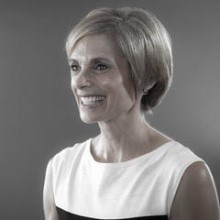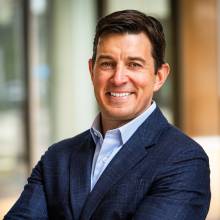Can Direct Primary Care Lead Private Practice Out of the Hole?
Primary care practices are suffering losses of over $15 billion because of COVID-19 but direct primary care physicians are reporting little change in revenue and better patient and clinician satisfaction.

Source: Getty Images
- It took two surgeries, nine doctors, and over a decade of care for Ashlie Olp to get a diagnosis for persistent leg pain.
The overall patient experience was frustrating for Olp, a physician herself who was working at a private family practice at the time.
“It was impossible to get ahold of a doctor to just talk to them and calling doctors' offices was basically pointless,” Olp, MD, said. “You would call and get a machine that asks you to leave a message. Then, you get a call back for four or five days later and never get a hold of a human being, never get hands on any records. Then, the wait for an appointment was crazy long, sometimes three months but definitely at least three or four weeks.”
And when Olp was finally able to get in front of a physician, the appointment would last 10 minutes and end without any real solution to the problem.
Eventually, the family physician took matters into her own hands and ordered the tests she knew she needed. She was diagnosed overnight and scheduled for surgery shortly after. But Olp owes all that to being a doctor herself.
Sitting in a hospital bed after surgery, Olp knew her own patients could not get the answers she was able to get relying on her own medical education.
“I started thinking about how I'm doing the same thing to my patients,” Olp shared. “I was in a traditional practice where I had 12 minutes per patient. If somebody called on a random day and was sick, I couldn't see them. I was way too busy. Then, when people came in, I was so glued to my EMR and all the things I had to do in there to get paid that I really couldn't pay attention to the patient.”
“I just decided I had to change that. I started doing some research on other options out there and I found direct primary care randomly,” said the current owner of Olp Family Medicine in Carmel, Indiana, a direct primary care practice established with the help of Freedom Healthworks, a company that provides the business know-how for starting up a practice.

Ashlie Olp, MD, Olp Family Medicine
Direct primary care is an alternative payment model. According to the American Academy of Family Practices (AAFP), in the direct primary care model, patients (or their employers or health plans) pay a monthly, quarterly, or annual fee for exclusive access to a primary care physician. The fee covers all or most of the services a traditional primary care practice would, including clinical, laboratory, and consultative services, and care coordination and comprehensive care management.
But patient also get extended visits, 24/7 access to their primary care provider, virtual care options, and other benefits their insurance carriers will not cover.
Physicians also benefit from the simplified payment model. Those practicing in direct primary care models spend more time with patients and less time on fee-for-service third-party billing. The model also reduces practice overhead and administrative burden, while providing a predictable revenue stream, AAFP says.
And if there is anything practice leaders need more right now, it is a simplified, predictable revenue stream.
COVID-19 is costing primary care practices about $15 billion this year, according to researchers from Harvard Medical School and American Board of Family Medicine. Their study published in Health Affairs earlier this year found significant visit volume declines in early 2020 – 58 percent for all visits in late March and 69 percent for in-person visits in early April – will result in about $65,000 in lost fee-for-service revenue per full-time primary care physician.
“For many primary care practices, particularly those serving the most vulnerable populations, these losses could be catastrophic, with many practices being forced to close,” said study author Sanjay Basu, director of research and population health at Collective Health and a faculty affiliate in the Harvard Medical School Center for Primary Care. “This could weaken the US health system dramatically at a time when we need it to be at its strongest.”
But for direct primary care physicians like Olp, revenue has remained stable during the COVID-19 pandemic.
“My revenue does not depend on how many patients I see in a day,” Olp said. “My revenue comes in because patients pay a monthly fee. I only see maybe two people live in the office, but I've talked to 16 people on the phone. I get paid the same amount. So, my revenue hasn't really changed at all.”
Direct primary care may be a lifeline for primary care practices that have reached their breaking point after years of underfunding, cumbersome administrative tasks, burdening overhead expenses, and a looming threat to their independence.
What a direct primary care practice looks like
Direct primary care is relatively new and unexplored compared to other alternative payment models, so the Society of Actuaries, in collaboration with the AAFP, recently conducted a survey of over 200 direct primary care physicians to gain a better understanding of the current direct primary care landscape.
The survey’s findings were published in a May 2020 report that showed that the majority of these physicians are practicing in a “pure direct primary care” practice that does not bill third-party payers on a fee-for-service basis. About 75 percent have also already opted out of Medicare and 5 percent are in the process of opting out.
Additionally, most worked independently to open their practices (74 percent), are the sole owners of their practices (76 percent), and opened their practices after 2015 (71 percent).
The main motivation for going into direct primary care was the potential to deliver better primary care, cited by 96 percent of respondents, followed by too little time for fee-for-service visits (85 percent), too much fee-for-service paperwork (78 percent).
Under the direct primary care model, physicians spend an average of 38 minutes with patients and patients only wait less than a day to get in for an in-person appointment and four minutes in the waiting room, on average.
In terms of membership fees and covered services, the average per-person monthly fees reported in the survey were $40 for children and ranged from $65 to $85 for adults, depending on age. Most practices also do not charge a per-visit fee for services covered under their memberships.
The average reported patient panel size was 445 patients, while the average target panel was 628 patients. The typical practice is about 70 percent of the way to its target panel, with most practices saying they’ll get there in about 21 months.
The report’s findings are in stark contrast to what a physician in a traditional private primary care practice experiences.
But nearly all direct primary care physicians reported having better or much better “overall (personal and professional) satisfaction” (99 percent), “ability to practice medicine” (98 percent), “quality of primary care” (98 percent), and “relationships with their primary care patients” (97 percent).
About a third (34 percent) also reported having better or much better earnings under the direct primary care model.
But despite the positive outlook from direct primary care physicians, many healthcare stakeholders argue that it is not the right fit for primary care.
Critics have contended that the model’s membership requirement limits primary care access, especially for those who cannot afford a monthly payment or who are part of marginalized populations. Patients also need to maintain insurance coverage for specialty and hospital care, putting more pressure on patients to navigate the complex healthcare system and most likely doing that with a high-deductible health plan.
Others have also argued that the model simply isn’t scalable and could actually incent providers to deliver less care since they are 100 percent accountable for total costs of care.
Physician groups, like the American College of Physicians, are calling for more data on creating sliding scale or lowering retainer fees for patients who cannot afford membership and policies that enable direct primary care practices to support and fund care for low-income patients.
Physicians like Olp, however, maintain that direct primary care in the right community addresses the major issues of private practice, including long wait times, distracted physicians, and even pricing transparency.
The model is not necessarily only for the affluent, supporters say. Affordable membership fees can give patients without insurance or with high-deductible health plans better access to primary care, which can prevent the need for more expensive care down the line.
Is direct primary care the right fit?
Establishing a direct primary care practice is a major investment. Here are some considerations direct primary care physicians, AAFP, and direct primary care associations and companies say physicians should contemplate before opening shop:
• How direct primary care will affect patients in the community, such as access to care in the area, surge at non-direct primary care practices
• Pricing, including patient ability to pay and appropriate rates for age groups (e.g., high fees for a younger, healthier population will not attract enough patients to be profitable)
• Whether the practice will be pure (only taking patients who pay the membership) or hybrid (a combination of membership patients and those covered by insurance)
• How much work a physician is willing to do outside of office hours via telehealth, phone, etc.
• Whether the practice will be totally independent or part of a network
• Draft a budget, including start-up capital, purchase expenses, and personnel costs
• Branding strategy and website based on who the practice will target (i.e., individuals, employers, and/or health plans)
COVID-19 sparks interest in direct primary care
Direct primary care is still in its infancy, with nearly 1,300 direct primary care practices operating across 48 states, according to the DPC Mapper from DPC Frontier, LLC.
But about 70 percent of direct primary care practices were established in the last four years, indicating the model’s growing reach in healthcare as of late, the SOA found in its recent report.
And the COVID-19 pandemic could lead to an even greater growth spurt.
“Our clients have been tremendously appreciative of the service that we provided through this pandemic,” said Chris Miller, MBA, CEO of Paladina Health, one of the country’s largest providers of direct primary care.
Headquartered in Denver, Colorado, Paladina Health operates 122 clinics in 19 states and the company is continuing to build more on- or near-site facilities to provide tailored primary care solutions for employers and individuals.
“Having patients able to access not only an on-site presence, but also our clinicians through virtual health has just been tremendously effective with helping folks navigate this pandemic,” Miller explained. “For instance, we can, through our robust data analytics engine, identify who the highest risk patients are, so our providers can proactively do outreach to the high-risk patients.”
That outreach, whether it is helping a diabetic understand his risk of contracting COVID-19 or an obese patient navigate weight management under shelter-in-place orders, drives great patient satisfaction, better clinical outcomes, and ultimately lower downstream healthcare costs.
“And this isn't something that would happen in the fee-for-service world,” Miller stated. “You can’t just call your doctor and get on video chat with your physician, at least not as often as you can in our model. I mean, some of these individuals with chronic conditions are talking to their providers daily or weekly.”
Telehealth has been a boon to COVID-19 response efforts, allowing providers to continue patient visits under shelter-at-home and social distancing orders. But implementation for practices, many of which had never used telehealth before, was a major challenge at the start of the pandemic.

Chris Miller, MBA, Paladina Health
Fee-for-service payment models typically pay significantly less for telehealth visits and most models do not reimburse anything for telephonic consultations, text messaging, or online chat conversations, even if they are done through a HIPAA-compliant application.
Private and public payers provided temporary flexibilities and payment parity for the services during the public health emergency, enabling practices to get up off the ground with telehealth utilization.
Direct primary care practices, however, had been leveraging telehealth and other virtual care capabilities before the pandemic.
The SOA report showed that 88 percent of direct primary care physicians covered telehealth with a practice membership. Nearly all the physicians (99 percent) also covered phone and text consultations at no additional cost.
“Telemedicine has been useful for me for almost three years and especially during COVID,” said Olp. “It has allowed me to be available to my patients 100 percent of the time and the other piece of that is, because my appointment is 45 minutes, if a patient really does need to come in, it is just me and the patient in the building. It's not a big, busy office building where there are 10 patients in a waiting room. Their exposure rate doesn't really go up.”
As COVID-19 continues to exacerbate access to primary care issues, Olp and Miller are both seeing demand for their services increase, especially as employers figure out ways to return to work safely.
Employers are arguably more concerned about employee health than ever before. Just one positive case of COVID-19 could shut down an entire business if the virus spreads in the office, or worse throughout a community.
To prevent that, employers are looking to screen their employees on a regular basis, explained Rich Roth, chief strategic innovation officer at CommonSpirit Health, which recently partnered with Paladina Health to bolster access to prevention and primary care.
“I do think there will be a deeper integration with screenings that are that are done for employees,” Roth said. “It could be temperature checks, it could be questionnaires, then, provisions of these direct-to-primary-care services.”
Roth does not expect the COVID-19 problems to go away anytime soon, but CommonSpirit Health wants “employers to be ready for work and feel safe and if we can help through this partnership, provide that level of comfort, that would be a fantastic outcome.”
“Ultimately, we may be able to bring together a unique set of service offerings that continue from these initial COVID-19 screens and contact tracing to provide clinical support to employers and employees and continue that into a primary care journey beyond COVID-19,” added Roth.
The future of primary care
From long wait times to inadequate reimbursement, primary care had a long list of issues prior to COVID-19 but the pandemic seems to be ushering in a new era for providers in the field.
Primary care practices transformed their business model in a matter of days in response to the public health emergency, ditching their main source of revenue for unprecedented utilization of telehealth and other virtual care services. And they did this while still serving as healthcare’s gatekeeper, identifying potentially infected patients and directing them to the appropriate source for care.
Yet nearly 9 in 10 primary care practices continue to face significant difficulties with COVID-19, including acquiring medical supplies, meeting increasing patient needs, and accessing sufficient resources to remain operational, according to a survey conducted by The Larry A. Green Center, in collaboration with the Primary Care Collaborative (PCC) in late July.
Even more worrisome, just 13 percent of responding primary care clinicians said they are adapting to a “new normal.”
Many industry groups have pointed to this evidence in their calls for telehealth payment parity after the pandemic. But persistent instability in primary care signals a need for a better overall payment model, experts at The Larry A. Green Center and the Primary Care Collaborative say.
“What we see in practices that are doing well right now is that the most beneficial relationship is one in which more than 50 percent of the income for primary care is based on a prospective, capitated payment that is risk-adjusted and not based on past fee-for-service performance,” Rebecca Etz, PhD, co-director of The Larry A. Green Center and associate professor of family medicine and population health at Virginia Commonwealth University, recently told RevCycleIntelligence.
Capitated payments or per member per month reimbursements may be the key to building a more resilient primary care system, other healthcare experts have echoed throughout the pandemic.
In a way, direct primary care practices are already living in that future.
“Our providers are full-time employees at Paladina,” Miller said. “They are incented to provide great care and they're fully salaried. So, they're not incented based on the number that they do. They are incented on providing better care and better population health management across the entire population of the employees that we're serving.”
“Because these kinds of incentives are in place, they can spend more time with patients and they don't have to spend as much time on coding and billing and insurance managed care,” Miller added.
Additionally, direct primary care practices are becoming a key resource for the growing number of uninsured patients during the recession by providing quality primary care without the need for expensive insurance products.
Direct primary care is more investment-oriented compared to traditional fee-for-service, Roth also said.
The grassroots movement, according to SOA, is no doubt growing in prevalence despite no standard direct primary care model existing as of yet. Organizations like Paladina Health employ physicians, while practice owners like Olp can call on the help of consulting firms like Freedom HealthWorks to establish the business model, including billing, payroll, accounting, and other back-office functions not taught to physicians in medical school.
But that investment is generating a return in terms of patient and clinical satisfaction, clinical outcomes, and lower overall healthcare costs for many primary care practices.
CORRECTION 09/03/2020: The article subheader said primary care practices have lost $15 million when it should have said billion.
